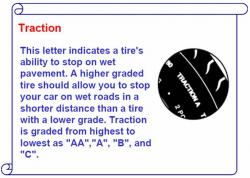Search the Community
Showing results for tags 'index'.
-
https://edition.cnn.com/2025/01/08/travel/worlds-most-powerful-passports-for-2025/index.html Who’s the itty-bitty city-state with the global passport the world thinks is great? There’s new year cheer for Singapore as it reclaims its place at the top of a quarterly ranking of the world’s most powerful passports. Holders of this desirable red travel document enjoy visa-free access to 195 out of 227 destinations worldwide, according to the Henley Passport Index, more than citizens of any other place on the planet. Japan is second in the ranking, with an open door to 193 destinations, having secured the silver medal by regaining visa-free access to neighboring China for the first time since the Covid-19 lockdowns. The EU member states of France, Germany, Italy and Spain are at No. 3, along with Finland and South Korea, with access to 192 destinations with no prior visa needed. The fourth position in the rankings is a testament to the power of the European Union’s border-free Schengen area, which guarantees free movement to more than 425 million EU citizens. It’s held by seven EU countries, each with visa-free access to 191 destinations: Austria, Denmark, Ireland, Luxembourg, Netherlands, Norway and Sweden. Squeaking into fifth place are five countries — Belgium, New Zealand, Portugal, Switzerland and the United Kingdom — all of which have visa-free access to 190 destinations. The mobility gap Now in its 20th year, the index, created by London-based global citizenship and residence advisory firm Henley & Partners, tracks global freedoms in 227 countries and territories around the world, using exclusive data from the International Air Transport Association (IATA). At the opposite end of the ranking, at No. 106, Afghanistan remains locked in bottom place, with visa-free access to just 26 destinations, two fewer than a year ago. Syria is at No. 105 (with 27 destinations) and Iraq is at No. 104 (with 31 destinations). This means that the gap between the travel freedoms enjoyed by the citizens at the top and bottom of the ranking has never been wider. “The very notion of citizenship and its birthright lottery needs a fundamental rethink as temperatures rise, natural disasters become more frequent and severe, displacing communities and rendering their environments uninhabitable,” said Christian H. Kaelin, chair of Henley and Partners, in a press release. “Simultaneously, political instability and armed conflicts in various regions force countless people to flee their homes in search of safety and refuge.” Climbers and fallers The rest of the top 10 is dominated by European countries, with a few exceptions. Australia and Greece are tied at No. 6, while Malta, Poland and Canada are at No. 7. Eighth place is shared by Czechia and Hungary, the United States and Estonia are at No. 9, and No. 10 is held by Latvia, Lithuania, Slovenia and the United Arab Emirates. The UAE is one of the index’s biggest success stories in global mobility, having secured access to an additional 72 destinations since 2015, allowing it to climb 32 places to 10th spot with visa-free access to 185 destinations. China is also a big climber, having jumped up the list from 94th place in 2015 to No. 60 in 2025. Only 22 of the world’s 199 passports have fallen down the ranking in the past decade and some surprising names are at the top of the list. Venezuela is at No. 1, followed by the United States as the second-highest faller. It’s dropped seven places from No. 2 to No. 9. The South Pacific archipelago of Vanuatu is at No. 4, followed by the British passport at No. 5 — a former No. 1. Canada is No. 5 on the losers list, having dropped three places in the ranking in the last decade. Henley & Partners’ list is one of several indexes created by financial firms to rank global passports according to the access they provide to their citizens. Arton Capital’s Passport Index takes into consideration the passports of 193 United Nations member countries and six territories — Taiwan, Macao, Hong Kong, Kosovo, the Palestinian territories and the Vatican. Territories annexed to other countries are excluded. It’s also updated in real-time throughout the year, but its data is gathered by close monitoring of individual governments’ portals. Arton’s Global Passport Power Rank 2025 puts the United Arab Emirates in the top spot, with a visa-free/visa-on-arrival score of 180. Second place is held by Spain, with a score of 179. The most powerful passports for 2025 1. Singapore (195 destinations) 2. Japan (193) 3. France, Germany, Italy, Spain, Finland, South Korea (192) 4. Austria, Denmark, Ireland, Luxembourg, Netherlands, Sweden, Norway (191) 5. Belgium, New Zealand, Portugal, Switzerland, United Kingdom (190) 6. Greece, Australia (189) 7. Canada, Poland, Malta (188) 8. Hungary, Czechia (187) 9. Estonia, United States (186) 10. Lithuania, Latvia, Slovenia, United Arab Emirates (185)
-
I believe most people are not aware of the relationship between air pressure and load index when replacing their tires. Me too... source: http://www.tirereview.com/?type=art&id=5278& Double Jeopardy by Scott Blair In March 2006 / In Focus: Performance When you sell a set of non-OE tires, do you set the air pressure the same as it was in the OE tires? Do your sales staff, manager and technicians understand the importance of load index? Can they read a load and inflation table? Can they recite, from memory, the inflation rule – that the replacement tire must meet or exceed the OE tire’s load carrying capacity? If the answer’s “no,” you might be taking a big liability risk. Not only do you have to train your staff in these matters, you also have to document that training to be fully protected against potential legal losses. Concerned? You should be. In fact, sit down and hold on; we’re going to hit you right between the eyes. We’re going to show you how you can sell the right tire size but the wrong load index. More Complex Than Ever Times have changed. Five years ago, a specific tire size had only one load index number. Not today. Now, a given tire size may have as many as five different load index numbers molded on the sidewall, making it impossible just to look at the size of a given tire and make the assumption that the load index number is the same just because the tire size is same. These days, you have to look at each tire, along with its complete sizing information, before you can make any fitment decisions. The following case studies will illustrate the importance of the relationship between load index and tire size. Case File: One A customer wants a set of 20-inch tires on his 2003 Lexus LS430. The OE tire is a P225/55R17 95H, standard load (SL) with a load index of 95 and recommended cold inflation pressure of 32 psi front/rear. The overall diameter (OD) is 26.8. You have a stack of P255/35R20 93Hs on the floor with an OD of 27, so you sell him a package deal. “The OD is correct, so it must the right tire,” you think to yourself. Not so fast. Take a look at the load index of that 20-inch tire. Notice that it is 93. The OE tire’s load index was 95. Install that tire, and you just might open the door to a liability suit if that customer gets into a wreck after leaving your shop. “How can this be?” you ask. I’ll show you: The OE P225/55R17 95H tire inflated to the recommended air pressure equates to 1,477 pounds of load capacity. A standard load (SL) P-metric tire reaches its maximum load capacity at 35 psi, regardless of the maximum inflation pressure listed on the sidewall! Looking at the load and inflation table, we see that the load index of 93 on the P255/35R20 93H tire equates to only 1,433 pounds of load capacity at 35 psi. It’s only 44 pounds per tire. “That’s not going to matter,” you argue. Tell that to the judge when he reads a settlement against you for some ridiculous amount of money because “the replacement tire did not meet or exceed the OE tire’s load carrying capacity.” The correct tire for this plus-size application should be a euro-metric (There is a difference!) 255/35R20 97H XL (extra load) tire, which has a load index of 97. Let’s say you installed this tire, which we now know is correct, but you used the OE air pressure of 32 psi. At 32 psi, this tire will only carry 1,290 pounds. If you do the math, you’ll see the following: 1,477-1,290=187 pounds overloaded per tire or 748 pounds totally overloaded. The correct cold inflation pressure should be adjusted to 38 psi front/rear to equal the 1,477 pounds of load capacity specified by the vehicle manufacturer. Case File: Two A customer comes in and wants a set of 20-inch tires on a 2004 Dodge Ram 1500 SLT Crew Cab RWD truck. The OE tire is a P265/70R17 113R (SL), with a recommended cold inflation pressure of 35 psi front/rear. You have a set of take-offs from another Ram 1500 already mounted with P275/55R20 111S tires. Since they came off of a Ram 1500, they should fit your customer’s truck, right? Sure, they might ‘fit,’ but they won’t be the right tires. The OE tire inflated to 35 psi equates to 2,535 pounds of load capacity. Take a look at the 20-inch tire’s load index: 111 SL. As mentioned earlier, a (SL) P-metric tire reaches its maximum load capacity at 35 psi. Therefore, a lower load index will decrease the maximum load capacity. If you were to install this tire and inflate it to 35 psi, the tire would be overloaded by 132 (2,535-2,403) pounds per tire or 528 pounds totally overloaded. The correct tire would be the optional tire that Dodge uses on its heavier trucks – P275/60R20 114S (SL). The load and inflation table reveals that, with the higher load index, we can adjust air pressure to 33 psi and still meet the OE recommended cold inflation pressure. In this case, however, you should still inflate to 35 psi, which exceeds the minimum recommended load capacity. The load capacity numbers were not technically correct. Can you guess why? Notice that, in Case One, a P-metric tire was installed on a light truck. According to the RMA, the load capacity of a P-metric or euro-metric tire installed on a light truck has to be reduced. Divide the load capacity of the P-metric or euro-metric tire by 1.1 to determine the load capacity for a light truck application. A common example would be a P235/75R15 105S (SL) tire inflated to 35 psi. The load capacity for a passenger car application would be 2,028 pounds. Placing this same tire on a light truck equates to 1,844 (2028
- 93 replies
-
- 6
-

-
- interesting
- article
-
(and 3 more)
Tagged with:
-
Any idea what is Singapore Happiness Index ? Read it somewhere but cant remember liao.... but I think the score was pretty bad , really cant remember liao .. Do you guy prefer Singapore to score world no 1 in GDP growth or You prefer Singapore to be rank No 1 in the Happinese Index ? Please note also note that GDP growth does not necessary translate to happy citizen This is a new gauge to gauge how well a country is run beside the usual GDP gauge . Just like wideband AFR gauge in modern car, the most important gauge to made your car happy !
-
Singapore laps behind Malaysia in giving....... or I should say "donations" ... Yahoo : Singapore behind Malaysia, Thailand, while Myanmar tops World Giving Index Singapore may be on top of many indexes, but when it comes to charity and giving, we don't fare so well. Singapore ranks at number 34 out of 145 on the World Giving Index this year, behind neighbouring countries like Malaysia, at 10th spot, and Thailand, at number 19. Myanmar, one of the least developed countries in Asean, is number one in the The Charities Aid Foundation's (CAF) sixth World Giving Index, holding the position for the second year running. According to the report, the generosity of Myanmarese people could be attributed to Theravada Buddhism, as charitable giving is integral to the religious observance. The index measures three kinds of generosity, namely the giving of money, time, and helping a stranger. On the ‘helping a stranger’ table, which asks if a person has helped a stranger in the last month, Singapore is at number 89. However, Singapore ranks much higher up on the ‘donating money’ table at number 18, just below Malaysia at number 17. On the ‘volunteering time’ table, Singapore stands at number 42. To summarise the index findings, CAF chief executive John Low said, “It is heartening to see that even during these times of economic uncertainty across the word, people are increasingly likely to donate money to causes that help others.” He added that it was humbling to see countries which have suffered adversity continue to score highly on the index. Singapore Red Cross secretary general and chief executive officer Benjamin William told Yahoo Singapore there has actually been an increasing trend of people volunteering in Singapore. “Many individuals and families are struggling to make ends meet, as well as coping with social and physical challenges such as chronic illnesses, disabilities, or family tragedies… we hope that Singaporeans will not forget these vulnerable people amongst us, and also channel their generosity and compassion to support the humanitarian services aimed at helping this group,” he said. William said Singapore continues to be generous and forthcoming in responding to good causes, such as helping communities affected by natural disasters. “Generally, donors are very supportive of organisations when they can identify with and relate to the cause,” he added. The World Giving Index was conducted on the Gallup methodology, where 1,000 questionnaires were completed by a representative sample of individuals living across a country. In larger countries, samples of at least 2,000 are collected. Link : https://sg.news.yahoo.com/singapore-behind-malaysia--thailand--while-myanmar-tops-world-giving-index-033727351.html After the 'Huang Na' , 'Changi Airport Cleaner' and NKF cases, who wants to burnt their fingers again ...
-
Our crony-capitalism index Planet Plutocrat The countries where politically connected businessmen are most likely to prosper Mar 15th 2014 | From the print edition http://www.economist.com/news/international/21599041-countries-where-politically-connected-businessmen-are-most-likely-prosper-planet
- 84 replies
-
- 4
-

-
- crony capitalism
- economist
-
(and 4 more)
Tagged with:
-
Will char kway teow lead to sugar spike? An upcoming Glycemic Index of Asian food will help public plan their diets. Each time Ms Juliana Lim goes grocery shopping, she lingers longer than most patrons along supermarket aisles. That is because she has to decipher the Glycemic Index (GI) of foodstuff from its fibre, sugar and fat content. For the last two decades, the diabetic has been sticking to a low GI diet because spikes in her sugar levels will make her tired at work. The GI is a measure of how quickly carbohydrate-containing food raises a person's blood glucose level. "But choosing low GI food has not been easy as its information is not readily available on the Internet or food labels," said the 44-year-old executive. WHAT IS THE GLYCEMIC INDEX? THE Glycemic Index, or GI, is a scale which measures how much a food containing carbohydrates raises blood glucose levels. Foods with a higher GI, such as white bread, can cause rapid spikes in blood sugar levels. Those with a lower GI, such as whole oats, are digested more slowly, causing more gradual and smaller changes in blood sugar levels. GI is computed on a scale of zero to 100. Foods with low GI register a value of 55 and below, medium GI ranges from 56 to 69 and high GI means 70 and above. Low GI foods include dried beans and legumes such as kidney beans and lentils, green leafy vegetables, most fruit, and many wholegrain breads and cereals. Fat and fibre tend to lower the GI of a food and generally, the more cooked or processed a food, the higher its GI. Knowing the GI values of food can help with better planning for a healthy diet. Research has shown that a low GI diet can help prevent heart disease and diabetes, control cholesterol levels and maintain a healthy weight. Source: http://www.straitstimes.com/breaking-news/singapore/story/will-char-kway-teow-lead-sugar-spike-20131118 Full Article: http://www-as.tp.edu.sg/gifoods.pdf
-
From Yahoo!News Are Singaporeans a happy lot? Not quite, if the latest Happy Planet Index (HPI) is anything to go by. The index measures how governments from around the world provide long, happy and sustainable lives for their people, based on three factors: life expectancy, happiness and environmental sustainability. The results from the 2012 study, which was released on Thursday, ranked Singapore a lowly 90th out of 151 countries. Coming in top for the second year running is Costa Rica, while the highest-ranked Asian country is Vietnam (second). Hong Kong, in 102th position, is the only Asian nation that is ranked lower than Singapore. Singapore scored well in life expectancy and well-being, but did poorly in environmental sustainability. Overall, it scored 39.8. The Lion City performed better in the same study done in 2009, where it was ranked 49 out of 143 countries, with a score of 48.2. But its showing this year is an improvement from 2006, where it came in at 131st position, out of 178 countries, with a score of just 36.1. For more information on how the Happy Planet Index is calculated, go to http://www.happyplanetindex.org/about/
-
2010 Quality of Life Index: 194 Countries Ranked and Rated to Reveal the Best Places to Live By the Staff of International Living Every January, we rank and rate 194 countries to come up with our list of the places that offer you the best quality of life. This isn't about best value, necessarily. It's about the places in the world where the living is, simply put, great. To produce this annual Index we consider nine categories: Cost of Living, Culture and Leisure, Economy, Environment, Freedom, Health, Infrastructure, Safety and Risk, and Climate. This involves a lot of number crunching from "official" sources, including government websites, the World Health Organization, and The Economist, to name but a few. We also take into account what our editors from all over the world have to say about our findings. Below are the countries that win our top 10 in this year's Quality of Life Index and the final scores for each country in every category. 1. France For the fifth year running, France takes first in our annual Quality of Life Index. No surprise. Its tiresome bureaucracy and high taxes are outweighed by an unsurpassable quality of life, including the world's best health care. France always nets high scores in most categories. But you don't need number-crunchers to tell you its bon vivant lifestyle is special. Step off a plane and you'll experience it first-hand. I always wish quality of life indicators could measure a country's heart and soul. But it's impossible to enumerate the joy of lingering for hours over dinner and a bottle of red wine in a Parisian brasserie. Or strolling beside the Seine on a spring morning, poking through the book vendors' wares. Or buying buttery croissants in bohemian Montmartre...hearing Notre Dame's bells...walking antique streets paved with poetry. Romantic Paris offers the best of everything, but services don't fall away in Alsace's wine villages...in wild and lovely Corsica...in lavender-scented Provence. Or in the Languedoc of the troubadors, bathed in Mediterranean sunlight. Provincial French properties are often keenly priced and lifestyles are less expensive than Paris. The Southwestern Midi-Pyrenees region is a particularly good hunting ground for village homes for less than $100,000
-
-
I think it's high time we compare the cost of buying & maintaining a car in all aspects, i hope all forum members who travel overseas can contribute to this index. The 2 globally available cars are the Civic 1.8 and the BMW 320 Let me start with.. Singapore's one Pls edit my one if need be ! Car Cost Rd Tax (Yr) Fuel/l(95) Imprt Tax Prking(/hr) avg Int Rte Ctry --------------------------------------------------------------------------------------- Civic1.8AT 72k 1,248 1.56 110% $3.00 3.5% SG BMW320 140k 1,548 1.56 110% $3.00 3.5% SG
-
- Global
- Maintenance
-
(and 1 more)
Tagged with:



























